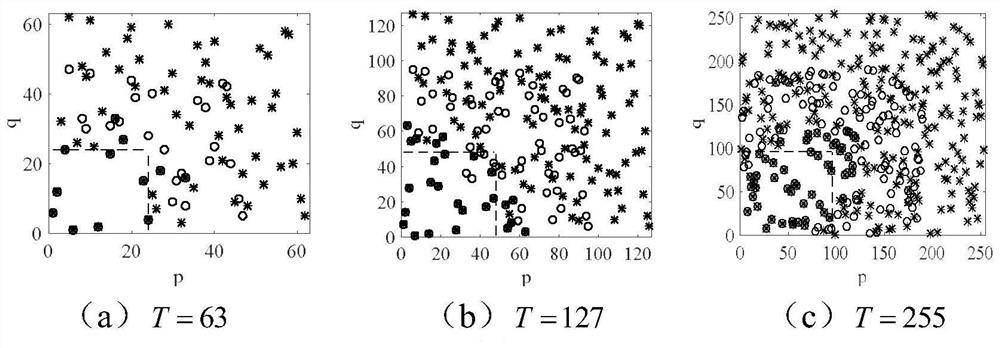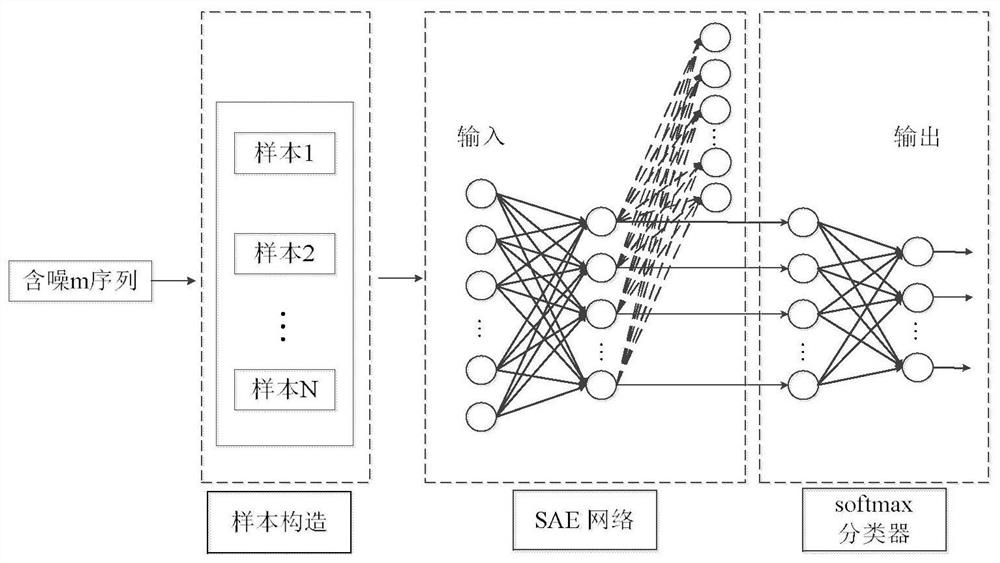M-Sequence Recognition Method Based on Sparse Autoencoder
A technology of sparse autoencoder and recognition method, which is applied in the field of estimation and recognition of binary pseudo-random sequences, can solve the problem that the detection accuracy of low signal-to-noise ratio peak points needs to be further improved, so as to reduce training complexity and save training time , good recognition effect
- Summary
- Abstract
- Description
- Claims
- Application Information
AI Technical Summary
Problems solved by technology
Method used
Image
Examples
Embodiment Construction
[0023] The embodiments of the present invention are further described in detail below.
[0024] as Figure 1 and 2 As shown, the m-sequence recognition method based on the sparse autoencoder, including the following steps:
[0025] Step 1: Generate n complete m sequences with different cycles T and different signal-to-noise ratios, as follows:
[0026] In order to verify the effectiveness of the method, the INPUT set samples of order 5 to 8 are selected to train the SAE network classification model, and the corresponding original polynomials are 6, 6, 18, and 16, respectively, for a total of 46. For four m sequences of different periods, a random value is taken between -4 and 4dB as the signal-to-noise ratio value, and N noisy complete m sequences are generated.
[0027] Step 2: Estimate the third-order correlation function of each sequence in the range of [T / 2,T / 2] to obtain a third-order correlation matrix containing the characteristic information of the m-sequence, as follows:
...
PUM
 Login to View More
Login to View More Abstract
Description
Claims
Application Information
 Login to View More
Login to View More - R&D
- Intellectual Property
- Life Sciences
- Materials
- Tech Scout
- Unparalleled Data Quality
- Higher Quality Content
- 60% Fewer Hallucinations
Browse by: Latest US Patents, China's latest patents, Technical Efficacy Thesaurus, Application Domain, Technology Topic, Popular Technical Reports.
© 2025 PatSnap. All rights reserved.Legal|Privacy policy|Modern Slavery Act Transparency Statement|Sitemap|About US| Contact US: help@patsnap.com



